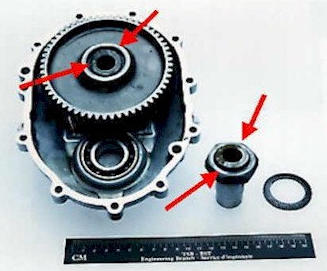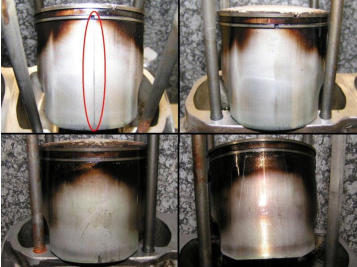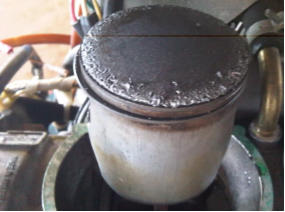
Lorem Ipsum is simply dummy text of the printing and typesetting industry. Lorem Ipsum has been the industry's standard dummy text
ever since the 1500s, when an unknown printer took a galley of type and scrambled it to make a type specimen book. It has survived
not only five centuries, but also the leap into electronic typesetting,
remaining essentially unchanged.



Rotax C drive drive shaft reduction drive failure.


Ultralight aircraft engines - things to look for when buying a used ultralight aircraft.
UltralightNews.com

When buying, try to buy a craft powered by an engine that parts or a
replacement engine, are readily available. Currently that would be Rotax,
Hirth, or Kawasaki.
You will find that replacing an engine, with another make and model, will
usually mean that you will also have to buy a new prop and redrive as well.
A good way of judging the condition of the engine is to remove the
exhaust/ intake manifolds, and the cylinder heads. You can do this for the
cost of replacement gaskets and about 30 minutes worth of work.
This allows you to view the pistons, both front and back, as well as the top.
Any kind of scoring means the engine has had a seizure requiring in most
cases an engine overhaul.
If carbon deposits are visible below the rings it means ring seizure, or
piston/cylinder wear. This also means engine rebuilding.
If the top of the piston shows signs of foreign material embedded in the head it
usually means, the engine has ingested something or an internal
engine component has failed!
A damaged piston dome could indicate; a problem with ignition timing, spark plug
heat range, lean fuel mixture, low octane fuels or failing internal engine components.
For more information check out - all found in Ultralight News.
Troubleshooting the Cuyuna Engine
Trouble shooting the Rotax Engines Volume 1 - 2 - 3
Ultralight Advisory Bulletins
Ultralight Aircraft, buying a used ultralight aircraft,
how to buy a used NOT abused ultralight!
The Rotax 618 engine, equipped with a "C" gearbox, lost power shortly after
departure, forcing the pilot to ditch the Genesis ultralight in a nearby canal.
There were no injuries, but the aircraft was badly damaged.
The accompanying photo illustrates the cause of the power loss — a failed gear
drive shaft in the reduction-gearbox housing — and the arrows indicate the
progression of the fracture over time.
Ultralight Aircraft Engines and Powerplants:
In the early days of ultralight aviation we would strap just about anything that
would turn a propeller onto the front or back of our craft. A rule of thumb was
not "if the engine quits" but "when the engine quits," be prepared for a forced
landing!















